Basic Tips for Advanced Results – TECH-TIPS BY HARVEY LOW
While this title may seem most basic and even somewhat “boring”, there are some basic rules and useful tips on using hobby thinners to get the most out of the hobby that can result in a first-class paint finish! First, there are generally three main types of hobby paints for plastic models: acrylic, enamel, and lacquer based.
If you are painting figures or details such as seats, stowage packs etc., most rely on artist thinners such as basic mineral spirits, distilled turpentine for oils (e.g., Winsor Newton), and distilled or plain tap water for acrylics such as Vallejo, AK Interactive 3rd Generation, or Abteilung 502 oils. Be careful to read labels closely, especially for AK Interactive as they make both oil-based and acrylic paint in tubes, only denoted by different coloured labels. These tube paints are great for miniatures and figures, as well as weathering effects. AK Interactive also make paints for figure modellers such as the 3rd Generation line. Vallejo also makes a line of paints for figure painters. These two paints are in small plastic bottles and great for hand painting, but less effective for large coverage of bigger surfaces such as cars, airplanes, tanks, and ships – and best applied by an airbrush.
Acrylic paints
These are arguably the more common type of paint for scale modellers generally designed for airbrushing. Acrylic paints are “water-based” meaning they are easy to clean with water and non-toxic. Acrylics dry very quickly. For beginners, they are the recommended paints as they are less toxic than enamels and lacquers. It should be noted however, that most of these, while labelled “acrylic”, are actually a “synthetic” alcohol-based paint and not a “pure” water-based paint. Tamiya and AK Interactive Real Colors are examples of these types of paint
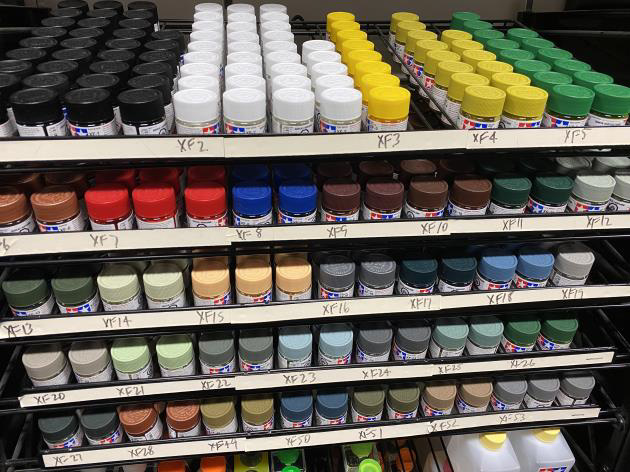
Enamel paints
Enamels are oil-based, and are more durable than acrylics, but are more toxic compared to acrylics (e.g., fumes). They tend to dry tough and are more rigid if you intend to handle your models frequently. Because they are slow drying, they tend to show less brush strokes, and are also often used for hand painting. The classic enamel paints are Humbrol and Testeurs, but Tamiya now make a small but growing line of enamels.
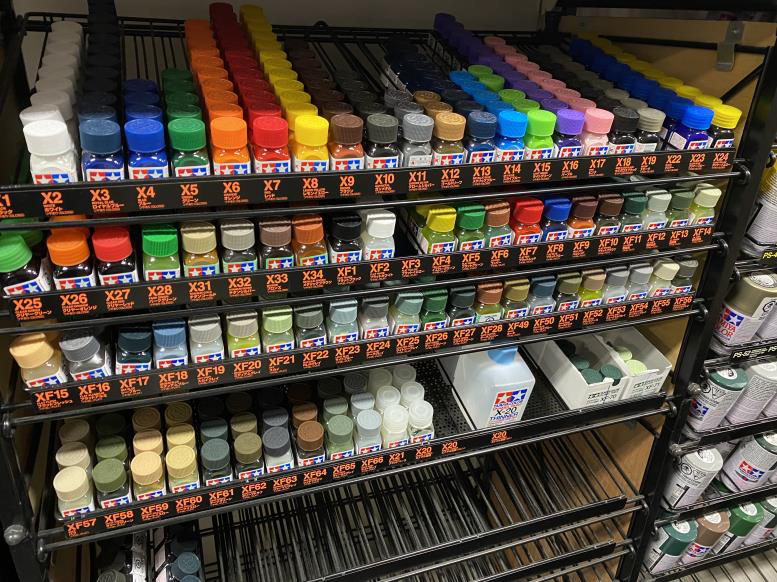
Lacquer paints
These are solvent-based. Although lacquer paints are not suited for hand painting (too “hot” tending to melt plastic if applied by hand), they are however, excellent for airbrushing due to the thinness of the paint. When dry they are the most durable of the three types of paint and also dry the fastest. They have become very popular with modellers in the past few years due to smooth finish with a growing line from Gunze/ Mr Hobby and Tamiya. But being the most toxic of all the three types, it is strongly recommended that you use good ventilation and spray-booths for better air flow when working with lacquers. Wearing a respirator is mandatory when spraying lacquers or enamels!
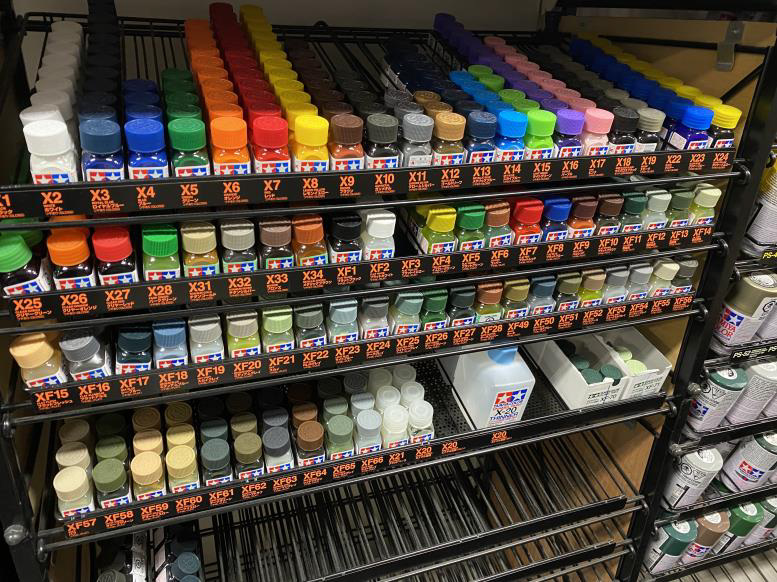
Different Kinds of Thinners for Different Kinds of Paint
Acrylic Thinners
While acrylics can be cleaned with water, they are best thinned with isopropyl alcohol (I like 70% IP) or their own brand of thinner. In fact many modellers use Tamiya or Gunze/Mr Hobby lacquer thinners with excellent results! If you are using acrylics for figure painting, apply them thinned with water and apply in layers using a retarder to slow the drying time to improve layering/blending. It should be noted that both Tamiya and AK Interactive Real Colors do not suggest using plain tap water to thin their acrylic paints, with the only exception being AK Interactive Gen3 or Vallejo figure paints in those tiny bottle as mentioned above. I have personally thinned Tamiya and AK Interactive paints with IP alcohol (again around 70% but 90% will still work). I have also thinned these with Windex! But always experiment first! FYI the term “Aqueous” is often used by Japanese manufacturers, but really just means thinners for acrylic paints. Generally, stick to the same thinner from brand name of the paint you are using.
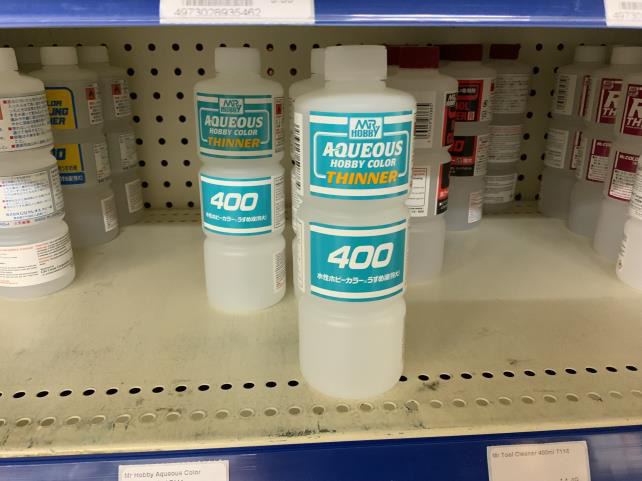
Enamel Thinners
Enamels are best thinned with enamel thinners such as Humbrol, and not lacquer thinners. Recently Tamiya has released their line of enamels. You can also use enamel thinners with oil paints such as Abteilung 502 and Winsor & Newton. If you do not want the smell, AK makes their own brand of enamel odorless thinner. Vantage Modelling Solutions VMS is another company that makes many kinds of thinners for both acrylic and enamel.
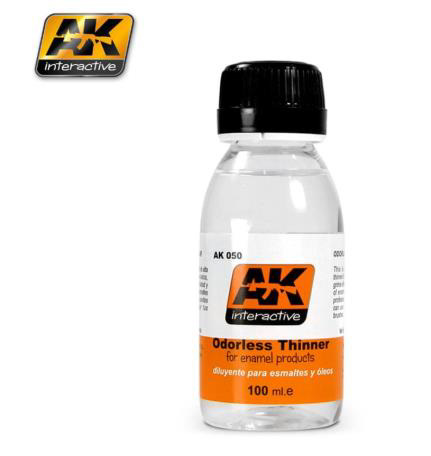
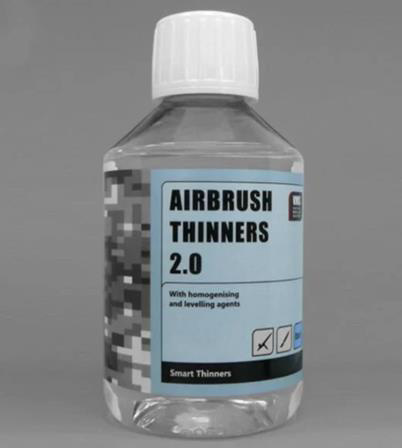
Lacquer Thinners
Thin lacquer paints with regular lacquer paint thinner from the hardware store. Do NOT use enamel thinners to thin lacquer paints! The best result is to thin them with hobby-made “lacquers” such as Mr Levelling Thinner! Regular lacquer thinner in large cans are available from hardware stores. While these thinners will work with lacquer hobby paints, the best results will be with hobby brand synthetic lacquer thinners such as Gunze. Use hardware store lacquer thinner to clean airbrushes.
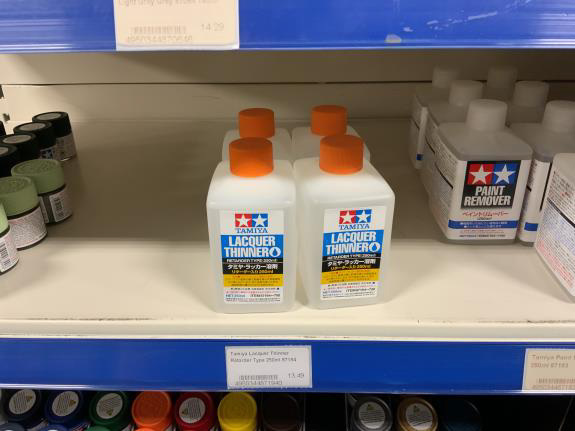

Tips
1) Safety first: Always airbrush with good ventilation! A mask is mandatory when spraying – especially lacquers!
2) Use lacquer thinners for smoother airbrushed finishes: I again I suggest using Gunze’s Mr Levelling Thinner, or Tamiya’s Lacquer Thinners (the orange cap is their lacquer with retarder to slow drying time). These thinners are superb thinners for airbrushing with Tamiya and AK acrylics. Again as above, I would not recommend other “pure” lacquer thinners (e.g., Canadian Tire), as the results are unpredictable.
3) YES you can apply Lacquer paints over acrylics: While the textbooks say NO, you can apply subsequent layers of lacquer paint over acrylics, as long as the first coat is misted on and not applied “wet”. Once dry after 15 minutes, it is safe to apply several layers of lacquer. This is useful in particular, with clear lacquer coats that tend to provide a tougher finish while being smoother in finish.
4) Thinning ratios: There is no magic formula, but the general rule is 50:50 (paint to thinner). If this helps, I find that the more delicate the pattern (such as tight camouflage patterns on Japanese or Italian aircraft etc.), require much more Thinner – sometimes as high as 30:70 paint to Thinner. Experimenting is best. Here’s a tip I use for very tight camo patterns… add a drop or two of dish soap liquid (any kind will do but Palmolive works for me) to your mix as it will improve the flow!
5) Clear coats: A tip I use to get absolute smooth final clear finishes (especially on aircraft), is to simply spray on a few wet coats of thinner over the final finish. For example, I like using Tamiya acrylics thinned with Mr Levelling Thinner, then with two or three thin wet coats of JUST the leveling thinner on its own for the final clear protective coat!
6) Cleaning your brushes and Airbrush with thinners: After use, I clean my paint brushes in water and then Windex to remove all traces of paint. After airbrush use, I always use a pure lacquer to clean the airbrush (e.g., Canadian Tire lacquer). Even Tamiya paints can remain inside an airbrush if not cleaned out properly.
Here are some examples of my models, using various types of thinners. Note the smooth finish and tight camouflage patterns – achievable with good quality paint thinners. :
Here are some examples of my models, using various types of thinners. Note the smooth finish and tight camouflage patterns – achievable with good quality paint thinners. :
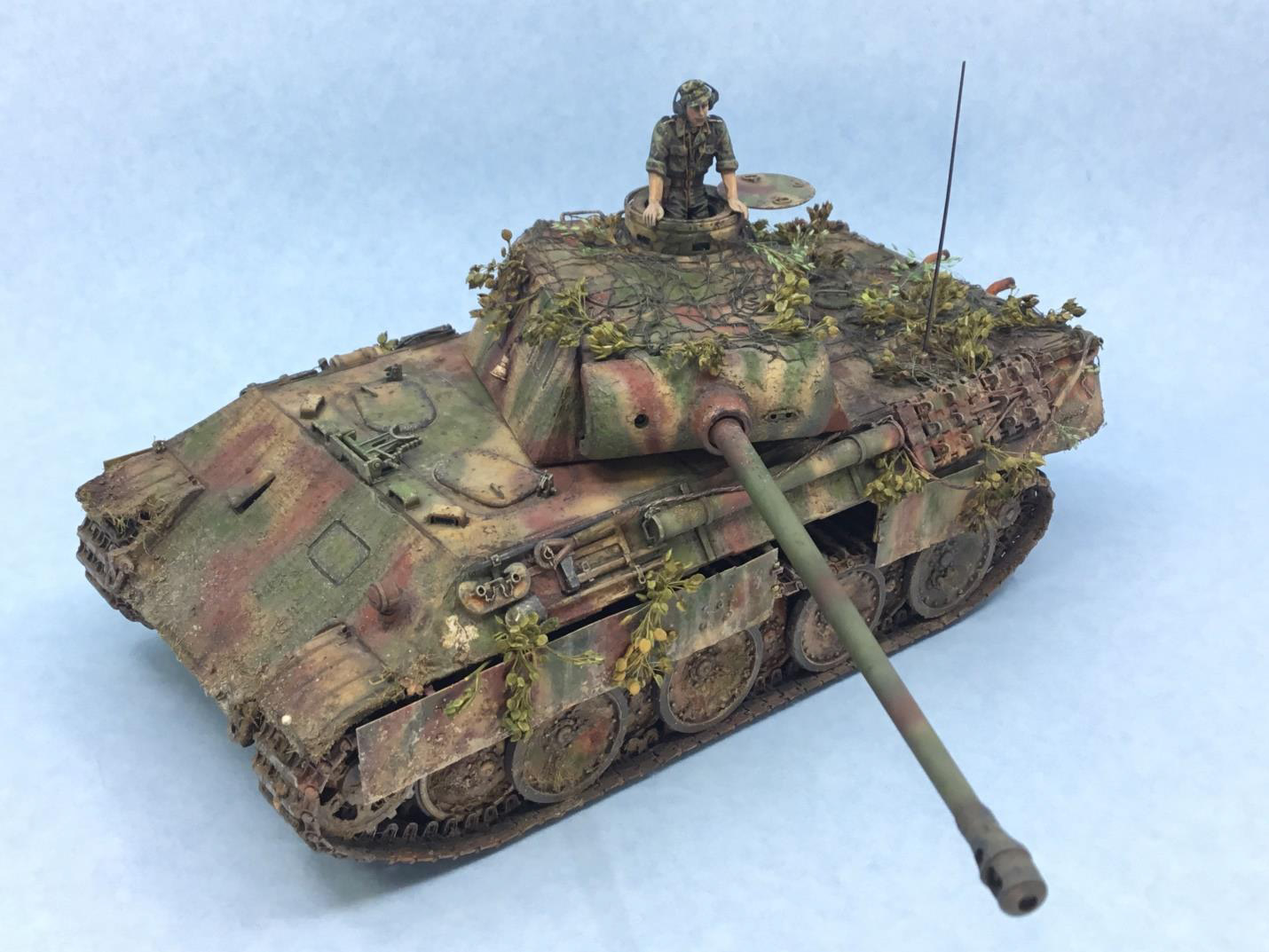
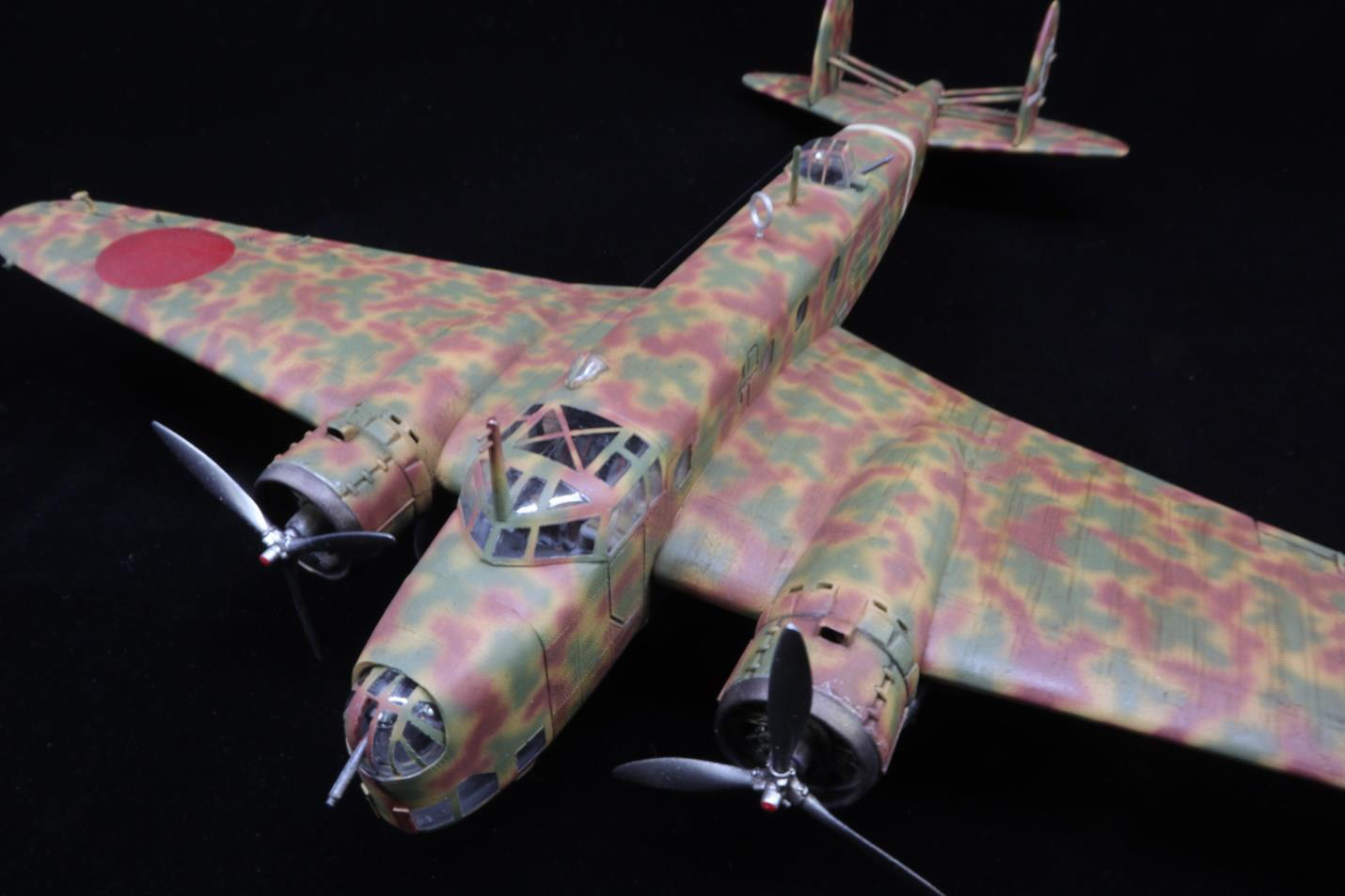
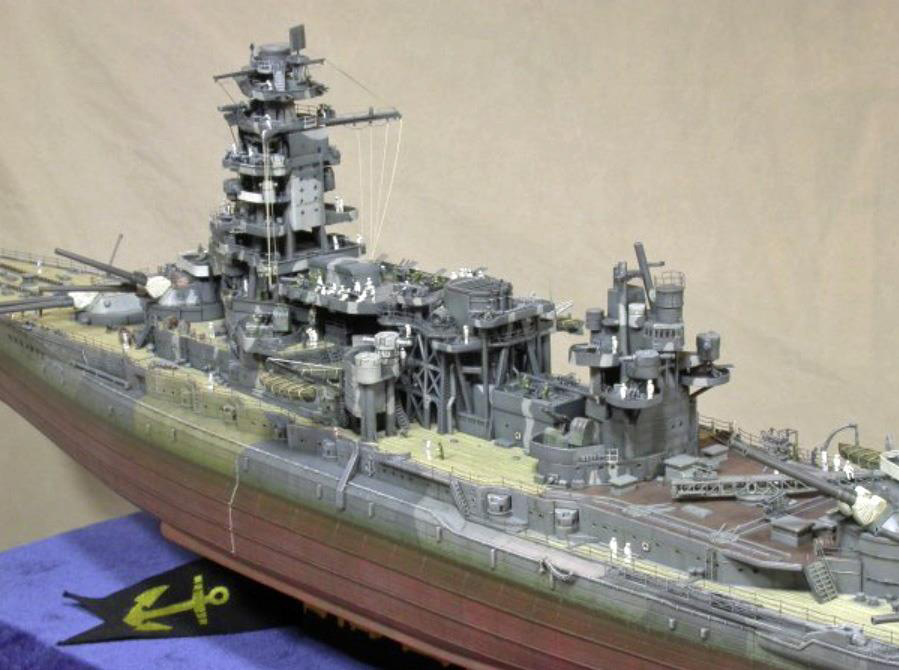
Harvey Low has been building plastic models since age eight and fast-forward fifty years and he is still building. Now professionally full-time for clients, museums, and magazines. He has written well over thirty articles for mainstream magazines such as FineScale Modeler, and Scale Aircraft Modelling. His specific interests are WW2 Japanese and Italian subjects.
Harvey has been competing in model contests since 1981. He has competed internationally and in 2018 achieved Master Class at the US AMPS national convention. Harvey currently helps run the local Toronto chapters of IPMS and AMPS Fort York Armour modelling club.
